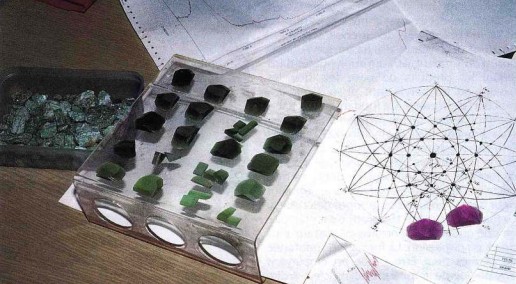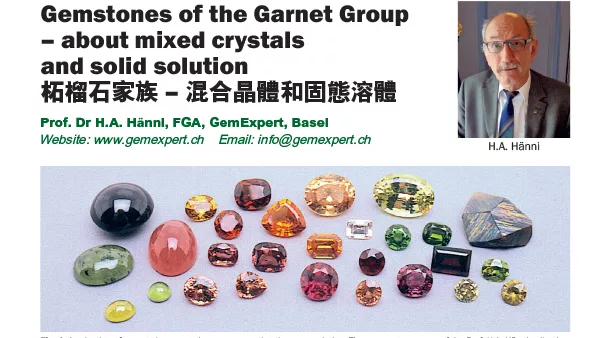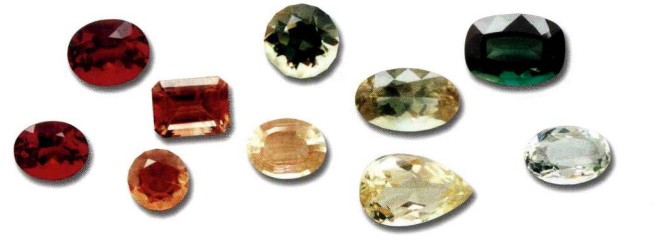
Anthill garnets from Arizona
By Dr. M.S. Krzemnicki & Dr. L.E. Cartier, first published in Facette 29 (May 2024)

Any gem hunter will tell you that collecting minerals from the soil is a hard job, especially if done in a remote place with rather dry and hot climate conditions and hard rocky soil. So, why not have small and hard-working animals such as ants do the work for you?
What seems to be a dream, has come true with the Anthill garnets, Absorption [a.u.] found in the Four Corners region of Arizona, USA. These orangey red to dark red pyrope garnets are commonly rather small (only few carats as rough) and have been collected by native people such as the Navajo for centuries. They discovered these red garnets while traveling along established western trails before the arrival of the Spanish in the New World. What makes these garnets so interesting is that they are not mined by humans, but by ants, specifically the Southwestern Harvester Ant, Pogonomyrex barbatus. These ants bring the rough garnets to the surface as they dig and repair their underground homes. The ant hills are usually small, only a few centimetres high, but can spread out to as deep as 2 metres underground. The garnets can be manually ‚harvested‘ from the ground (Figure 1).

In 2023, we added to our SSEF research collection two faceted anthill garnets of about 0.5 ct each, which were bought at the Tucson Gem Show (Figure 1). Apart from their intriguing provenance, we were also interested to carry out some gemmological testing on these stones of orangey red and dark red colour.

Chemical analyses and absorption spectra quickly confirmed their identity as iron-bearing pyrope garnets with distinct amounts of chromium (0.2 wt% Cr2O3 in the orangey red stone and 2.5 wt% in the dark red stone) and calcium (about 10 wt% CaO; grossular component). The high chromium in the dark red garnet is resulting in two broad Cr- related absorption bands strongly overprinting the iron Fe2+ related absorption features commonly observed in reddish pyrope. Its dark red colour is therefore mainly caused by chromium. Interestingly, the absorption spectrum of the orangey red pyrope is a combination of Fe2+ related bands (almandine component) with Fe3+ absorption features as observed in hessonite, the orange brown iron-variety of grossular (Figure 2). In this sample, the chromium (0.2 wt% Cr2O3) is only marginally contributing to colour. Much more important for its colour is the presence of both divalent and trivalent iron in its crystal structure.
Anthill garnets are usually small and after cutting rarely exceed 1 ct in size. However, given their saturated red colour, any larger stone would become very dark red, thus far less attractive than these small treasures which were originally ‘mined’ by the activity of tiny ants.


